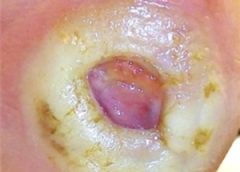By: Nancy Morgan, RN, BSN, MBA, WOCN, WCC, CWCMS, DWC
I was thrilled to be asked to write a blog for Wound Care Advisor. They asked me to come up with a name for the blog. I thought it would be easy… NOT ! I found myself doing all this research on how to make up a good name that would be catchy and memorable. I reached out to all my wound care friends for ideas and started a long list of names. Every morning I would look at this list and add more. Then I said I had to STOP THE INSANITY! I had to refocus and asked myself… who are you writing the blog for? It’s for people like me! I am a nurse that is in love with wound care, I have been in this field for almost two decades—ouch! that just dated me. I started at bedside then moved to an educator role co-founding the Wound Care Education Institute where we have taught over 16,000 clinicians, spreading the knowledge of Wound Care so they can make a difference in their patients’ lives. I am that person that “gets the rush” every time I see a wound. (more…)
Read More



